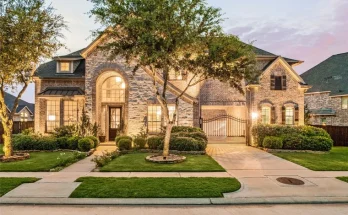Homeowners insurance is primarily designed to cover damage caused by unexpected events like storms, fires, or vandalism. However, many homeowners don’t realize that their policy might help cover certain home improvement projects as well. If a covered event causes damage, your insurance could contribute to repairs or even upgrades, saving you significant out-of-pocket expenses.
Understanding which improvements might qualify for coverage can help you make the most of your policy. Here are nine home improvement projects that insurance might help pay for—depending on your coverage and the cause of damage.
1. Roof Repairs or Replacement
A strong, well-maintained roof is essential for protecting your home, but replacing one can be expensive. If your roof is damaged by a covered peril, such as hail, wind, or falling debris, your homeowners insurance may cover the cost of repairs or even a full replacement.
Some policies also allow for upgraded materials during a replacement, which means you might be able to install more durable roofing without extra costs. However, general wear and tear or neglect won’t be covered, so it’s important to keep your roof in good shape to qualify for coverage.
2. Window Replacement
Windows play a crucial role in your home’s insulation and security, but they can also be costly to replace. If your windows are damaged due to storms, vandalism, or an accident, your insurance might help cover the costs. However, does home insurance cover windows in all cases? That depends on the policy.
If you’re upgrading to impact-resistant or energy-efficient windows after damage, your insurer might contribute toward the replacement cost. However, if your windows simply need replacing due to age or inefficiency, insurance likely won’t help.
3. Siding Repairs or Upgrades
Extreme weather conditions like high winds, hail, or even fire can cause significant damage to your home’s siding. In many cases, insurance will cover repairs or replacements if the damage is due to a covered event.
If only a portion of your siding is damaged and the new materials don’t match the existing ones, some policies may even cover replacing all the siding to ensure uniformity. This can be a great opportunity to upgrade to more durable or energy-efficient materials.
4. Plumbing and Pipe Replacement
Old or damaged pipes can cause serious water damage, leading to costly repairs. If a sudden burst or leak is caused by a covered event—such as freezing temperatures or accidental damage—insurance may help pay for pipe replacement and the resulting water damage restoration.
However, if your pipes are deteriorating due to age or poor maintenance, insurance likely won’t cover the replacement. If you suspect your plumbing is aging, it’s a good idea to have an inspection and address any issues before they become major problems.
5. Electrical System Upgrades
If an electrical fire damages your home, your insurance will likely cover the cost of repairs. In some cases, you may be able to use that opportunity to upgrade your electrical system to modern standards.
Older homes with outdated wiring may pose a fire risk, and insurance companies sometimes require updates to keep your policy active. If an incident occurs and you need to replace wiring, it may be worth asking your insurer about potential upgrades.
6. Flooring Replacement
Water damage, fire, or other disasters can ruin floors, but insurance may cover the cost of replacement if the damage is caused by a covered event. Whether you have hardwood, tile, or carpeting, insurance can help pay for new flooring materials and installation.
If your policy covers like-for-like replacements, you may be able to negotiate an upgrade to higher-quality materials at little to no extra cost. However, if your floors simply wear out over time, insurance won’t provide assistance.
7. HVAC System Repairs or Replacement
Your heating, ventilation, and air conditioning (HVAC) system is essential for home comfort. If your HVAC unit is damaged due to an event like fire, electrical surge, or falling debris, your homeowners insurance may cover the repairs or a full system replacement.
However, issues related to aging equipment, lack of maintenance, or general wear and tear won’t be covered. If you’re thinking of upgrading your HVAC system, check your policy to see if it includes any provisions for covered damages.
8. Deck and Porch Repairs
A damaged deck or porch can pose safety risks, but if the damage is due to a covered peril—such as a storm, fire, or fallen tree—your insurance might cover the necessary repairs or rebuilding costs.
If a replacement is needed, this could be an opportunity to upgrade to more durable materials that require less maintenance. However, insurance won’t help if your deck deteriorates over time due to poor upkeep.
9. Foundation Repairs
Foundation damage can be one of the most expensive issues a homeowner faces. In some cases, homeowners insurance may help cover the cost if the damage is caused by specific events, such as plumbing leaks, earthquakes (with additional coverage), or extreme weather conditions.
However, foundation issues caused by normal settling, poor drainage, or lack of maintenance are typically not covered. If you’re facing foundation problems, it’s worth consulting with your insurer to understand what assistance, if any, is available.
Final Thoughts
Homeowners insurance is designed to protect your home from unexpected damage, and in many cases, it can also help fund necessary repairs or improvements. If you experience damage, reviewing your policy carefully and documenting the issue thoroughly can increase your chances of receiving financial assistance.
While not all home improvement projects qualify for coverage, understanding your policy and working with your insurance provider can help you maximize the benefits available. If you’re considering upgrades after an insurance-covered repair, be sure to ask about your options—you may be able to improve your home at little or no additional cost.



